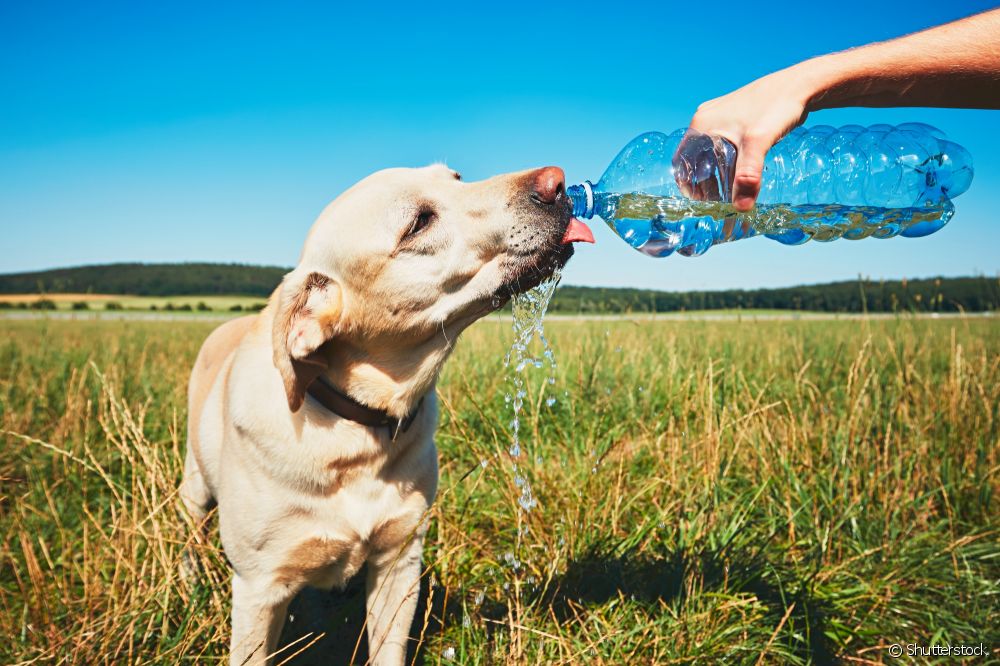Gastric torsion in dogs: what it is and how to identify it

Table of contents
Gastric dilatation in dogs - or gastric torsion, as it is popularly known - is a more dangerous disease than you might think and can affect the health of large dog breeds such as German Shepherd, Labrador and Saint Bernard. Rapid and lethal, it is almost always caused by a build-up of gas, food or liquids in the animal's stomach, which causes the organ to rotate and dilate. When left untreated thetime, the disease can develop quickly, compromise your friend's health and be fatal. To clarify the main doubts on the subject, we talked to veterinarian Frederico Lima, from Rio de Janeiro. See below what he told us about gastric torsion!
Gastric torsion in dogs: understand what it is and the main causes of the disease
First of all, you need to understand how your friend's stomach works. Under normal conditions, the dog ingests food and the organ takes care of breaking down the food and thus emptying the stomach through its own physiological mechanisms. In this sense, gastric torsion is nothing more than the twisting of the stomach on its own axis. According to the veterinarian, the condition is usuallycaused by the "looseness" of the ligaments that support the stomach and control rapid overeating. The habit is common in young dogs of large breeds, for example, who tend to ingest a lot of food or liquids quickly. In addition, stress can also trigger gastric dilation in dogs.
Canine gastric dilatation: symptoms to watch out for
It is not very difficult to identify gastric torsion in dogs: the disease is mainly characterized by an increase in the animal's stomach and the presence of gas. In addition to these, the veterinarian explains that other signs may indicate that something is not going well with your friend's health. "A lot of abdominal pain, intense weakness and changes in behavior can also be symptoms of the disease," he says. For ifThis is a dangerous and often fatal condition, so it is important to observe your pet and seek specialized care when you notice any symptoms. "Gastric dilation in dogs prevents blood circulation in the vessels of the region and stimulates the increase of toxic compounds in the animal's body. Therefore, the guardian must always be attentive to avoid the fatality of his pet ", he warns.

How is gastric torsion diagnosed in dogs?
If you notice excessive dilation of your dog's stomach, the first step is to take him for a consultation with the vet. Only then will it be possible to know what is happening and then start treatment. "The diagnosis can be made with imaging tests. In addition, the clinical examination performed by the veterinarian in an emergency can also detect gastric torsion in dogs",says the professional.
Gastric torsion in dogs: treatment is done through surgery
The treatment for gastric torsion in dogs is only one: surgery. "In this way, the organ is repositioned and emptied, if necessary. In addition, surgery also ensures the fixation of the stomach to the wall of the abdomen, increasing the stability of the organ ", explains Frederico. It is worth mentioning that there are no home remedies and miracles that can treat and prevent the progression of the disease.Therefore, as soon as the guardian notices any of the symptoms of the disease, he should consult a veterinarian immediately. Remember: when treated early, the disease poses no risk to your friend's life.
Controlling your friend's diet can help prevent gastric torsion in dogs
When it comes to gastric dilatation in dogs, one thing is certain: feeding can influence your friend's health. Therefore, the veterinarian points out: "It is important to avoid eating food in an eager or exaggerated way." In this case, the use of a slow dog feeder can be a good option for dogs that go "very thirsty to the pot". In addition, it is important to avoid running andplay after meals, especially in large dogs. It is also good to avoid playing or messing with the animal while it eats. Just like humans, dogs need to enjoy tranquility during meals.
See_also: Pet probiotic: what is it for and how to give it to your cat?
